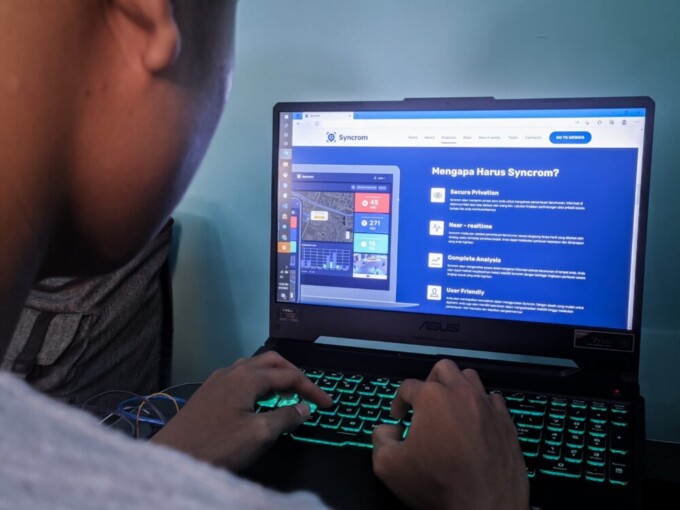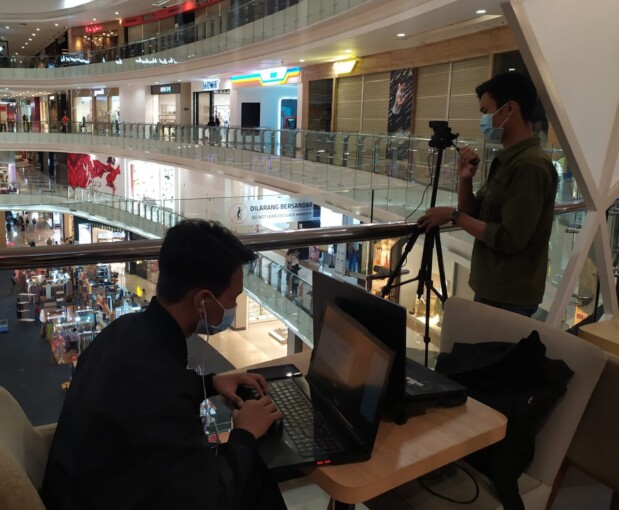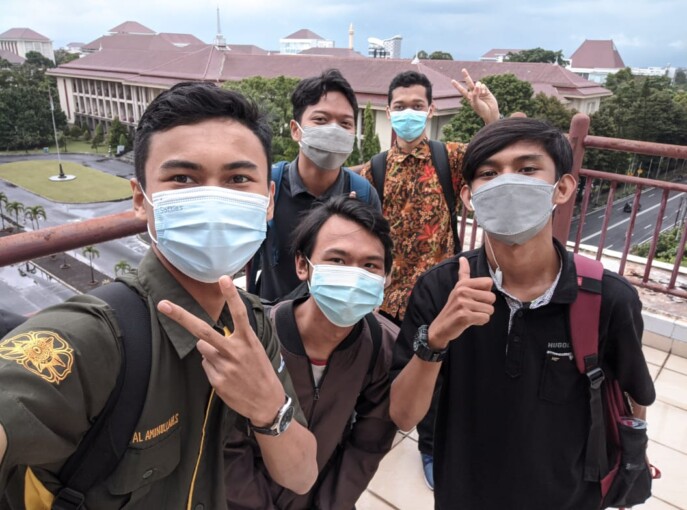Following frequent health protocol violations in the community, UGM students, comprising Zulfa Andriansyah (Geography), M. Ihsanur Adib (Geography), Wahyu Afrizal Bahrul Alam (Engineering), Malik Al-Aminullah Samansya (Engineering), and Najmuddin Muntashir ‘Abdussalam (Engineering), teamed up to develop a crowd detection system called Syncrom, short for System of Detection and Crowd Mapping, to monitor the enforcement of physical distancing and prevent the multitudes throng public spaces. This Deep Learning and WebGIS-based system can display the number of people, time, place, and visualization of crowds in near real-time.
“The system can detect crowds and display information of when and where they occur. With this, monitoring can continue for 24 hours, and data will get updated every 30 seconds,” said the head of the research team Zulfa when contacted on Wednesday (3/8).
According to him, Syncrom automatically flags up a potential crowd at the camera-mounted location and notifies it through a loudspeaker. It processes and analyzes visual data obtained from a webcam connected to a computer that has previously been programmed with deep learning to detect humans and predict crowds. The results, consisting of information about the location, time, and the number of crowd occurrences, are then sent to WebGIS.
“If the data signify a crowd, a voice alert will sound,” he explained.
Since its initial development in June, the prototype has proven accuracy of above 75%. Although the current model utilizes a webcam instead of CCTV due to limited funds, the data remain decent and accurate. The team plans to add a text alert feature (SMS or Telegram) later to notify the monitoring officer while off the control room.
“Even with a webcam, resulting in low and medium image resolutions, its accuracy is satisfactory. Eventually, further improvements will include an upgrade to high-resolution CCTV for more accurate results,” he said.
Syncrom receives a 2021 Student Creativity Program development grant worth IDR 9 million from the Ministry of Education, Culture, Research, and Technology.
Author: Ika







